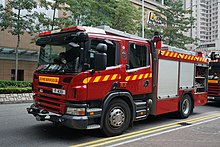
A fire engine is a vehicle, usually a specially-designed or modified truck, that functions as a firefighting apparatus. The primary purposes of a fire engine include transporting firefighters and water to an incident as well as carrying equipment for firefighting operations in a fire drill. Some fire engines have specialized functions, such as wildfire suppression and aircraft rescue and firefighting, and may also carry equipment for technical rescue.

The Hong Kong Police Force (HKPF) is the primary law enforcement, investigative agency, and largest disciplined service under the Security Bureau of Hong Kong. The Royal Hong Kong Police Force (RHKPF) reverted to its former name after the transfer of sovereignty of Hong Kong from the United Kingdom to People's Republic of China in 1997.
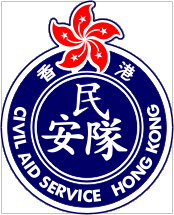
The Civil Aid Service (CAS) is a civil organisation that assists in a variety of auxiliary emergency roles, including search and rescue operations in Hong Kong. CAS is funded by the Hong Kong Government and its members wear uniforms.

The Singapore Civil Defence Force (SCDF) is a uniformed organisation in Singapore under the Ministry of Home Affairs that provides emergency services such as firefighting, technical rescue, and emergency medical services, and coordinates national civil defence programme.

The London Fire Brigade (LFB) is the fire and rescue service for London, the capital of the United Kingdom. It was formed by the Metropolitan Fire Brigade Act 1865, under the leadership of superintendent Eyre Massey Shaw. It has 5,992 staff, including 5,096 operational firefighters and officers based at 102 fire stations.

Auxiliary Medical Service (AMS) is a voluntary medical and health services provider in Hong Kong. Its mission is to supply effectively and efficiently regular services to maintain the health and well-being of people in Hong Kong.
As firefighting has a rich history throughout the world, traditions in this profession vary widely from country to country.

The Fire Services Bureau is responsible for fire and rescue services in Macau. Volunteer fire brigades in Macau dates back to 1851 and full-time department in 1883. Prior to 1851, the Portuguese military provided fire services in the colony. In 1999, the CB became a fully civilian agency. Today the department is organized under the Macau Security Force. The brigade is responsible for fire and rescue for both land and air.
General Fire Brigade of Guangdong is the provincial emergency service force for firefighting and rescue in Guangdong and under the order of the China Fire and Rescue Force, which is part of the civil service and administrated by the Ministry of Emergency Management (MEM).
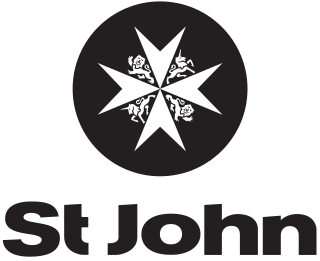
Hong Kong St. John Ambulance is a charitable organisation with a long history stretching back over a century and has been serving the community since 1884. Adhered to its motto, "For Faith, For the Service of Mankind", the organisation is dedicated to providing first aid and ambulance services in emergency, dental care for the handicapped, and courses of instructions on first aid and home nursing for the general public. Notably, Hong Kong St. John Ambulance is the only branch of St John Ambulance to provide free dental services as part of their regular services.

Dublin Fire Brigade is the fire and rescue service and ambulance service for County Dublin, including Dublin city, in Ireland. It is a local authority service, operated by Dublin City Council on behalf of that council and those of Fingal, Dún Laoghaire–Rathdown and South Dublin. There are currently 14 fire stations staffed by DFB, 12 of which are full-time, the other 2 are "retained" and operate on call 24/7 365 days a year with up to 500 calls per year. Full-time stations are staffed by shifts across 4 watches. There are currently over 963 active firefighter/paramedic personnel making it by far the largest fire service based on personnel and resources in Ireland.

Fire services in the United Kingdom use a variety of fire appliances, which perform a wide range of general and specialised roles and fit into several distinct categories. Contemporary fire appliances carry a multitude of equipment and firefighting media to deal with different types of emergencies ranging from fires, rescues, vehicle extrication, floods, salvage, casualty and trauma care.

The Baltimore City Fire Department (BCFD) provides fire protection and emergency medical services to the city of Baltimore, Maryland, United States. Founded in 1797 and established in 1859, the Baltimore City Fire Department covers an area of 81 square miles (210 km2) of land and 11 square miles (28 km2) of water, with a resident population of over 640,000 and a daytime population of over 1,000,000. The BCFD responds to approximately 235,000 emergency calls annually. There are two International Association of Fire Fighters (IAFF) locals; IAFF 734 for firefighters and IAFF 964 for officers.
The 2011 Fa Yuen street fire occurred in Fa Yuen Street, Mongkok, Hong Kong on 30 November 2011 in one of the most densely populated area. The fire killed 9 people and injured 34 others, making it the deadliest fire in Hong Kong in 14 years. It had taken place around the same time as the Hong Kong Fire Services Department's 48-hour protest.
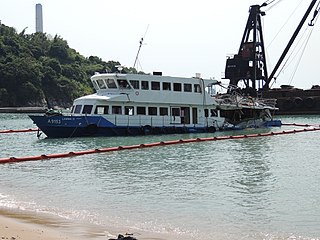
On 1 October 2012, at approximately 20:23 HKT, the passenger ferries Sea Smooth and Lamma IV collided off Yung Shue Wan, Lamma Island, Hong Kong. This occurred on the National Day of the People's Republic of China, and one of the ships was headed for the commemorative firework display, scheduled to take place half an hour later. With 39 killed and 92 injured, the incident was the deadliest maritime disaster in Hong Kong since 1971.
The Hong Kong Police Force (HKPF) is structured into numerous bureaus and units. As a whole, it is commanded by the Commissioner of Police, who is assisted by three deputy commissioners. The "Deputy Commissioner – Operations" supervises all operational matters including crime. The "Deputy Commissioner – Management" is responsible for the direction and co-ordination of force management including personnel, training, and management services. The “Deputy Commissioner — National Security” is responsible for the National Security Department, which deals with acts of sedition, terrorism, and collusion with foreign governments.

The 2019 Prince Edward station attack, also known as the 31 August MTR station incident, was an incident in which Hong Kong police indiscriminately attacked passengers while arresting protesters who were returning home via Prince Edward station, on the night of 31 August 2019, after a protest was held that same day. The event was described as the police version of the 2019 Yuen Long attack, and the police have been criticised as acting like terrorists. Rumours have been circulated that several protesters were beaten to death at the station, but the police have rejected allegations. However, a mourning vigil was set up by a group of residents outside one exit of the station.

National Fire and Rescue Administration (国家消防救援局) is the state emergency service force for firefighting and rescue in China, which is part of the civil service and is administered by the Ministry of Emergency Management (MEM).

Chan Hon-yee, JP is a Hong Kong medicine specialist and civil servant who served as Director of Health and Director of the Auxiliary Medical Service.
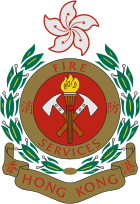



![Fire Services Headquarters Building [zh] (Xiang Gang Xiao Fang Chu Zong Bu Da Lou ) HK HKFireServices HQ Bldg Entrance.JPG](http://upload.wikimedia.org/wikipedia/commons/thumb/c/cf/HK_HKFireServices_HQ_Bldg_Entrance.JPG/220px-HK_HKFireServices_HQ_Bldg_Entrance.JPG)


